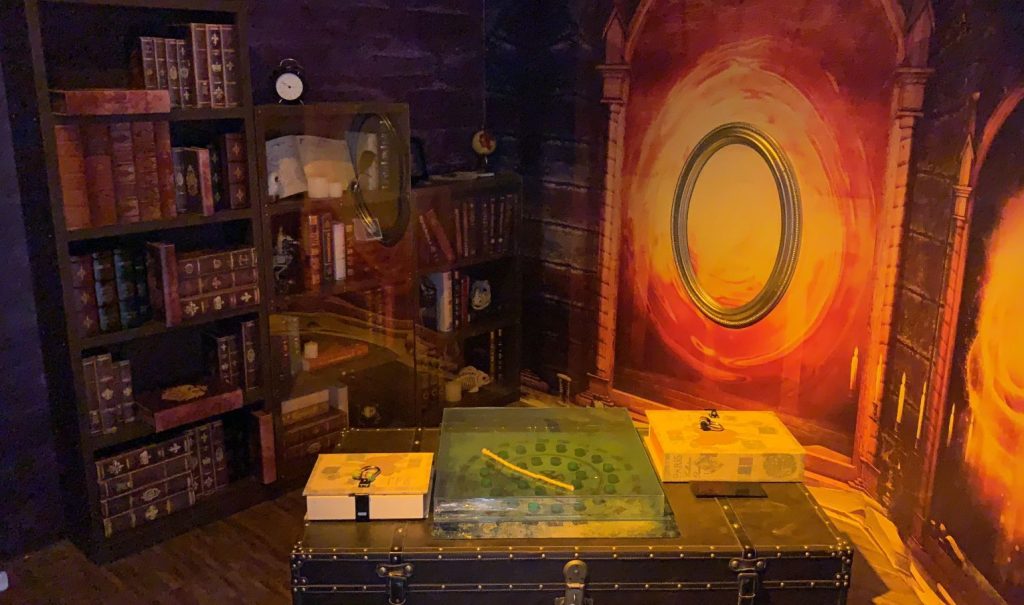Background
Years ago, I had a friend from University who had known me for many years and returned to Hong Kong from Canada. Everyone has their own family and the children are in the schooling stage. Recently, everyone got together and talked about how children can achieve a balance between “learning” and “playing.” She said: “Many parents and friends are very focused on their children’s learning but lack of playing time, which will cause problems for children’s development.” I personally believe in the concept of “learning while playing.” Some say “Play is the highest form of research!”, and “Edutainment” has also risen in popularity throughout the recent years which is a module that integrates Education and Entertainment.
Many schools are now committed to promoting educational activities which many will also include STEAM elements, which stands for Science, Technology, Engineering, Art, and Mathematics. The aim for students to observe and learn through observation, participate in solving and understanding problems, and finally researching solutions together. Especially in this era of advanced technology, most children rely heavily on “electronic pacifiers” (i.e. smartphones and tables), and they must have a device in hand at all times. Over-reliance will only affect children’s brain development, vision problems, and even social skills.
Game therapy
From time to time, I participate in birthday parties hosted by parents for my children, and I also act as a mentor-teaching children how to overcome adversity through different games. Game therapy is no longer a new thing and it’s proven that games can really have a healing effect, but you may want to use some easier methods for children and use different activities to help them at expressing their emotions, focusing on problems, coming up with a solution. Whether it is ball games, chess games, or adventure games, they can produce different effects.
This time I want to talk about how children explore their full potential through the escape games. People may have the impression must be dark and scary, but these are the previous concepts; many of them are very suitable for family entertainment now, especially in this article I will mainly talk about what I have learned and why I personally think edutainment is the way to go!
Away From Electronic Devices
The escape room game is designed for everyone involved to use cooperation, wisdom, observation and communication skills. Many escape rooms also do not allow the use of any electronic devices. Everyone must contribute during the game so there’s never a dull moment. The atmosphere and focus needed for solving puzzles can help the players completely forget about the dependence on the electronic devices.
Practice communication skills
Since electronic devices cannot be used, communication between teammates is heavily emphasized. People nowadays always use smart phones and enter simple symbols and text in apps to replace verbal communication. In escape rooms, verbal communication is essential to solve puzzles as they may require two-way communication in order to activate some gadgets inaccessible to some other players . For example: teammates in the room find different clues, and they need to press buttons at the same time to proceed to the next step, but they can’t see each other so this really tests their communication and listening skills.
Thinking Outside of the Box
“Think out of the box!” I believe you’ve heard it. In the escape room game, this type of thinking can be used pretty often. Sometimes,decorations inside the room may not just be decorations, but may have hidden secrets inside; sometimes, it’s an old English bookcase, but it’s a mechanical gadget to open the secret path; sometimes, A hanging picture may be the exit you’re looking for. In everyday life, children are often limited by rules and guidelines and fail to make full use of their outside the box thinking. Therefore, in this special environment, they can break their usual habits and trigger their hidden potential and ideas.
3Q ( IQ, EQ, AQ) Training
The escape room game design itself contains a variety of different puzzles. It stimulates the brain by throwing challenges at the players at every turn and makes them think in more clear and rational ways. The game has a time limit, so every moment counts and a little bit of pressure is added to the players, especially when you don’t know how many levels are ahead. If you want to successfully complete the game in a record time, there will be even more added pressure. Improper emotional management will only affect the game performance, so you must deal with the problems calmly. The escape game is full of adversity. You need to find clues, come up with a solution immediately, and overcome difficulties. This is quite similar to what everyone encounters in their day to day life, whether at work or school, etc and so it’s good adversity quotient training. Sometimes I feel it is necessary to give children a sense of frustration, in order to let them know how to deal with failure, manage their emotions, and reflect on the problems, because not everything in the journey of life can be smooth all the way. The escape game is a good way for them to experience victory or defeat!
Build Teamwork
Most children are self-centred, and they must have fought over toys at least once, whether it’s with their brothers, sisters, classmates or companions! However, in the escape game, there is no hierarchy, only division of labor. We must work together to solve difficulties. Many games and puzzles can’t be completed by one person. In the process, through communication, and compiling ideas, teamwork is gradually established. Furthermore, everyone can learn more about your skills, learn from each other’s strengths. More often than not, when parents see children arguing, in order to calm down the dispute, they will just be punished. The children fail to understand, feel wronged, and sometimes may even suffer psychologically. A good way to deal with these disputes is to let them have a common “enemy.” The escape room is their enemy and if they do not cooperate well, they will only be disappointed in the end.
All in all, escape games are a good parent-child activity or a birthday party, in addition to letting children have some fun. Parents and children can participate in the escape and have a good bonding experience. On the one hand, they can observe and affirm the creativity of the children, and on the other hand, the children can see the cool side of their parents not normally seen at home!
“Children are not things to be moulded, but are people to be unfolded.” Jess Lair

玩中有學!
年前,筆者有一位認識多年的大學同學從加拿大回流返港,大家擁有各自的家庭,現在小朋友都正處於求學階段。近日,大家相約一聚,談及到小朋友在「學習」與「玩耍」中如何取得平衡。她說:「現在有很多家長朋友都非常之專注於小朋友的學習反而欠缺玩樂時間,這樣會對小朋友的發展造成問題。」我個人亦非常贊成「玩中有學」的概念,愛因斯坦曾經說過「Play is the highest form of research!」,而近年亦興起「Edutainment」,一種融會了Education及Entertainment的活動模式。
現在許多學校都致力推行活動教學,特別加入STEAM元素,即是科學(Science)、 技術 (Technology)、 工程(Engineering)、 藝術(Art)》、 數學(Mathematics),讓學生能透過觀察、學習,一同參與解難、洞悉問題、研究解決方法⋯⋯ 尤其在這個科技發達的時代,大多數小朋友非常倚靠電子奶嘴,無論何時何地都要一機在手,注意這並不是玩中有學!過度倚賴反而只會影響小朋友的腦部發展、視力出現問題、更甚會影響社交能力。
遊戲治療
我不時有參與家長為小朋友舉辦的生日派對,亦會充當導師 — 透過不同遊戲教導小朋友如何逆境解難。遊戲治療並不再是新鮮事,遊戲真的可以有治療作用,不過我反而想用一些輕鬆的方法介紹一下能如何與小朋友拉近距離,透過不同的活動讓他們善於表達自己情緒、專注問題、研究其解決方法。無論是球類、棋類、又或者歷奇遊戲,都能產生不同的效果。
這一次我想談及如何透過密室逃脫遊戲令小朋友發揮無限小宇宙。可能在大家印象中的密室逃脫一定就是黑暗的、恐怖的、考膽量的,不過這些都是以前的觀念;現在有很多都是很適合家庭娛樂,特別在這篇文章將會主要談及玩中有學,以下幾點我個人覺得非常之適合訓練小朋友的:
遠離電子屏幕
密室逃脫遊戲設計本身是要運用大家合作性、智慧、觀察和溝通能力,當中不容許使用任何電子屏幕(例如手機、平板)的存在。在遊戲進行當中,需要大家發揮所長,透過遊戲訊息及氣氛,專注解謎,在尋找解決方法中可完全忘卻對於電子屏幕的倚賴,正好可以訓練遠離電子屏幕。
鍛鍊溝通技巧
既然不可以使用電子屏幕,那麼團隊之間的溝通就是要一種考驗。現在都市人都是用智能電話、在APP內輸入簡單的符號、文字取代溝通。在主題房間內,那種人與人之間溝通、對答是要懂得運用耳朵聆聽、嘴巴表達、身體語言、眼神接觸,進行訊息的傳遞。例如:房間內隊友各自找到不同的線索,要大家同時按下從而獲得進一步的提示,但位置卻偏偏是彼此看不到對方的距離,這時候正好考驗大家的表達能力,如何能把一些奇形怪狀的符號或圖案清晰表達,讓對方明白、理解、執行。這需要運用到觀察力、幻想力、以及如何在短時間之內表達清楚,是一個挺好的鍛鍊。
發揮破格思維
“Think out of the box!” 這句說話相信你一定聽過。在密室逃脫遊戲中,正正可以發揮這種破格思維。有時候,明明只是一盞古老的掛燈,但它的倒影卻是一個解碼的數字;有時候,明明是一個舊英式的書櫃,它卻是一個會自動觸發打開進入秘道;有時候,默默地掛在牆壁上的一幅掛畫,它偏偏就是你搜尋良久的出口⋯⋯ 這些都是要透過不同擺設、道具,運用無限觀察力及想象力,才會讓你發現得到它的不平凡。在一般常規的生活中,小朋友往往被規則,指引局限而未能充分運用其破格的思維,因此這特別的環境下打破習以為常的觀念、規律,引發無限潛能的小宇宙。
3Q全面訓練
智商(IQ)、 情商(EQ)、 逆商(AQ)。密室逃脫遊戲設計本身包含多種不同的謎題,透過思考提升智慧、腦轉數加快,讓思路更清晰有理。遊戲設有時間限制,每一刻都要與隊友爭分奪秒破解謎題,尤其在你不知道前面還有多少關卡、有多少個未破解的謎題,又或者有成功逃脫者前車可鑑,以很快的時間成功闖關,這時候一定存有壓力,若是情緒管理不當只會影響遊戲表現,所以必須要冷靜處理問題。在整個密室逃脫遊戲就是一個逆境當中要你尋找線索,即時想出解決方法,跨過難關,這正是每個人生活上都必然會遇到的,無論在工作上、學業上、情感上等等,它是一個很好的逆境商數訓練。有時候我反而覺得要給予小朋友一定的挫敗感,讓他們知道如何面對失敗,管理好自己的情緒,反思問題所在,因為人生旅途上並非每個都可以一路平坦,密室逃脫這遊戲就是要他們勝不驕敗不餒的體驗!
建立團隊精神
小朋友一定是自我為中心,肯定試過與年紀相若不論是兄弟姊妹、同學或同伴爭玩具,讓你煩惱吧!不過在密室逃脫遊戲內,就是沒有高低之分只有分工之分,大家要互相合作才能夠一起解決難關,這裡沒有所謂個人英雄主義,很多機關道具若是堅持一個人根本無法完成,在過程中,透過溝通共識,團隊精神由此逐漸建立。再者,大家可以更加了解大家的看家本領,取長補短,於限定時間之內共同破解謎題從而逃離密室。很多時候,當家長看到小朋友起爭執,為了平息紛爭,會採取兩個都會懲罰、又或者會說「大讓細」,結果只會造成不公平,小朋友心中未能理解、覺得委屈、心理受到影響。所以往往在處理這些問題,就是讓他們出現一個共同的「敵人」,密室逃脫正正是他們的敵人,你們若不好好合作只會失望而回。
最後,密室逃脫除了可以讓小朋友放電之外,還是一個很好的親子活動又或者舉辦生日派對。家長與小朋友一同參與密室逃脫,一方面可以觀察、肯定一下小朋友的創造力,另一方面又可以發掘一下小朋友的無限潛能。
“Children are not things to be moulded, but are people to be unfolded.” Jess Lair


